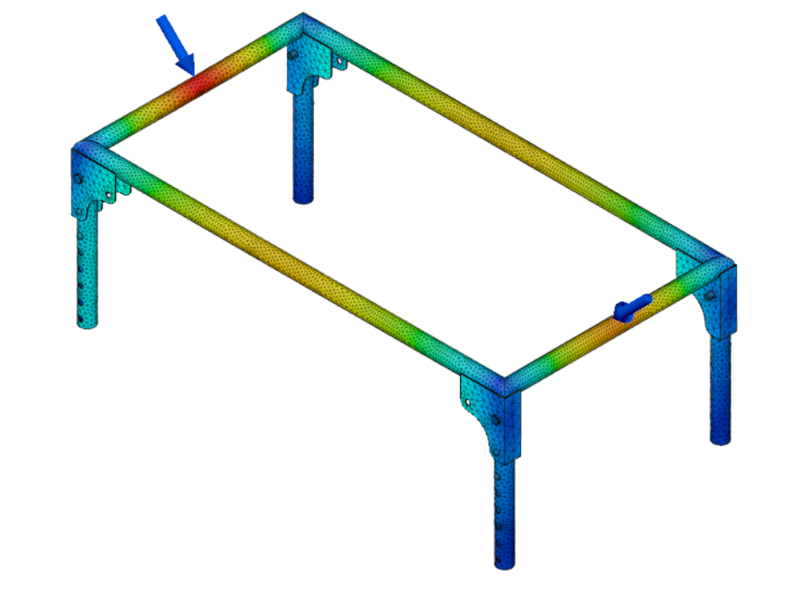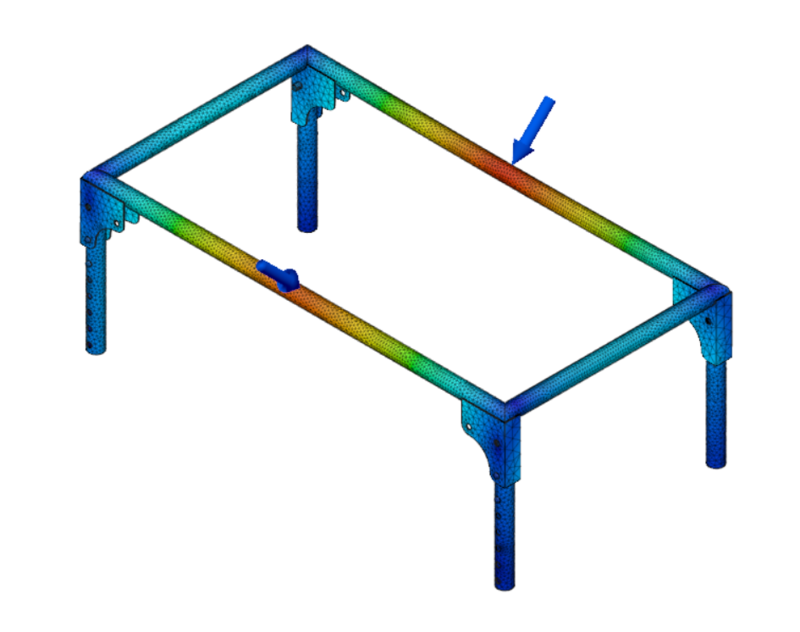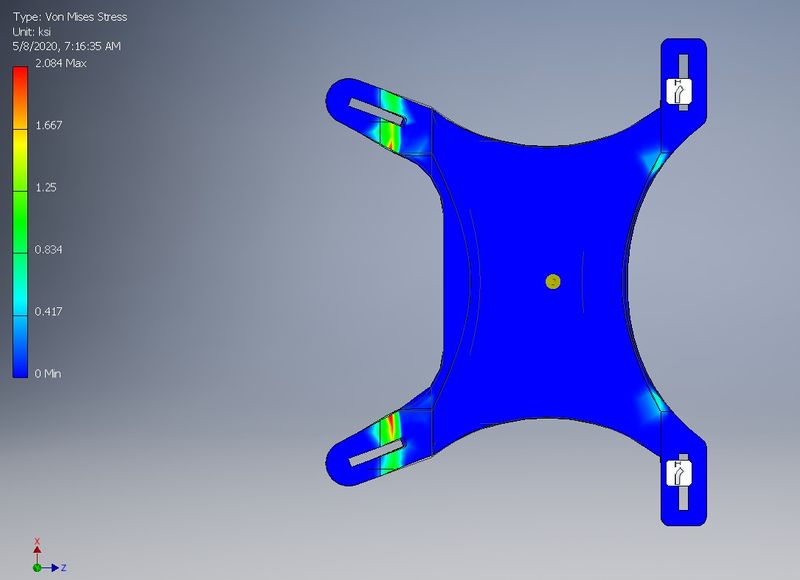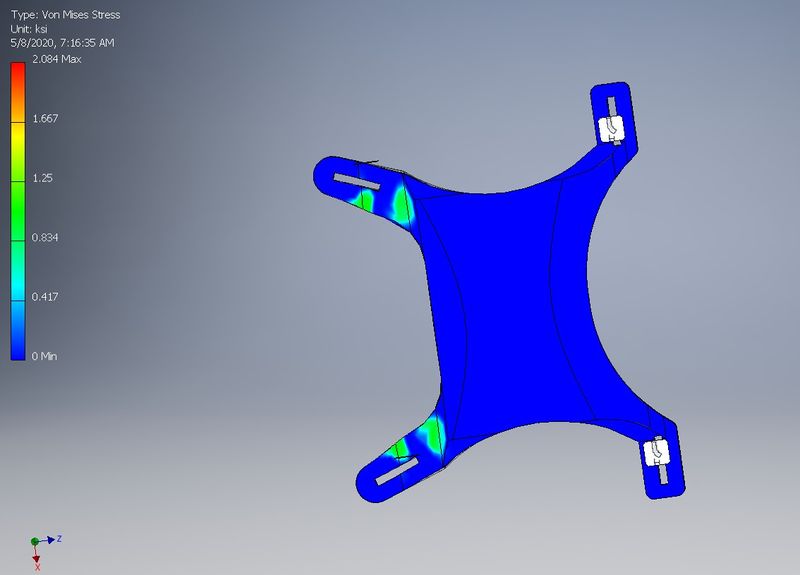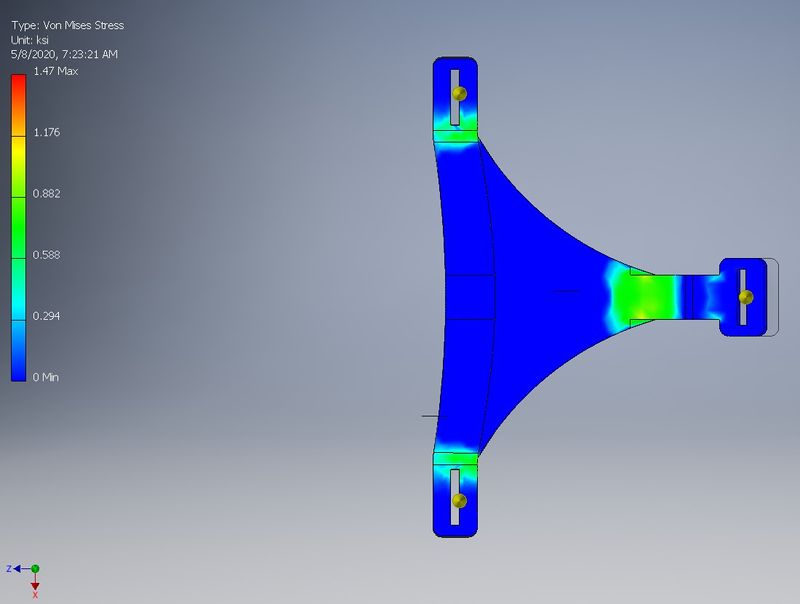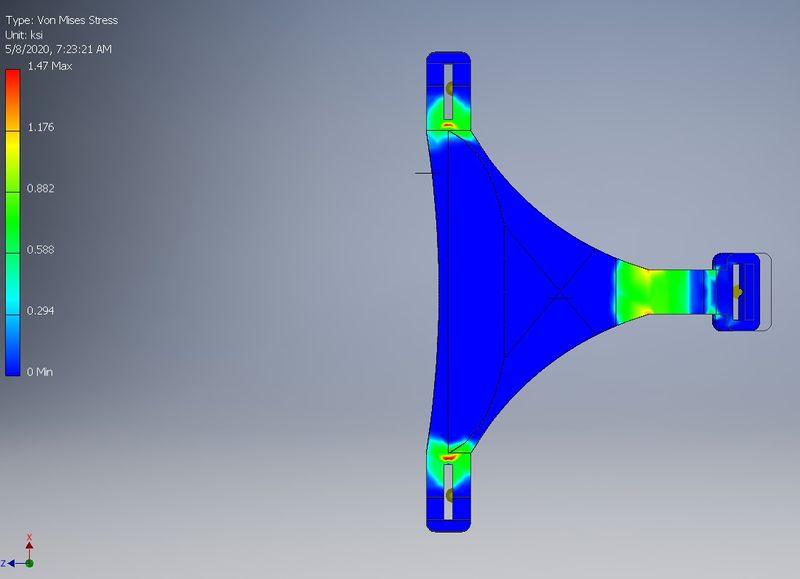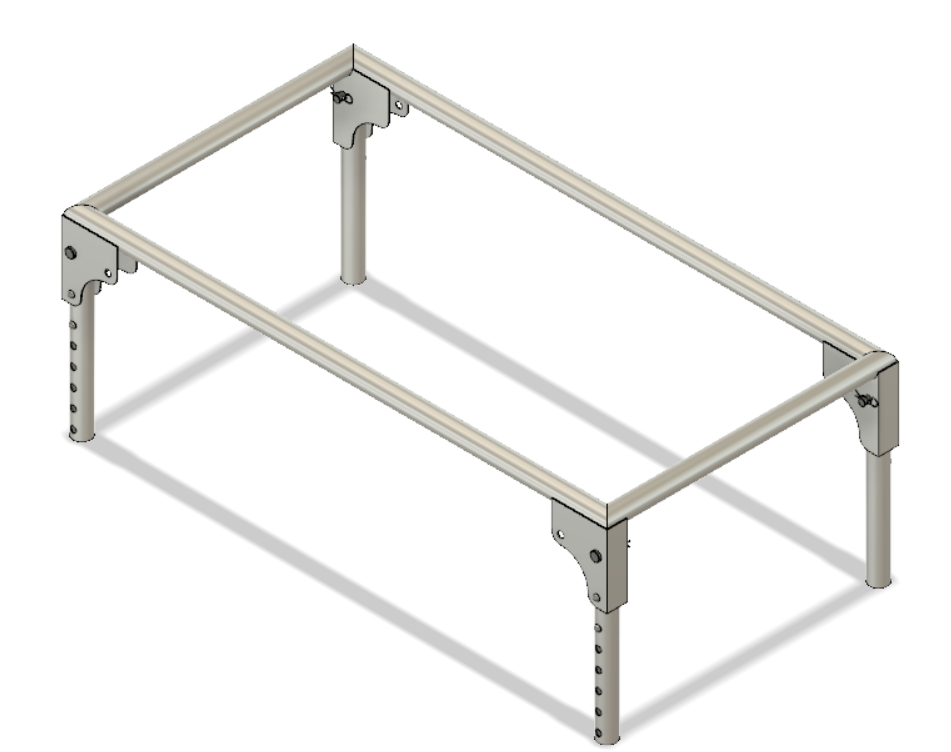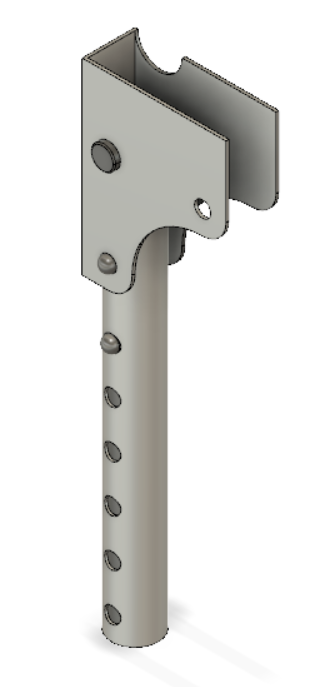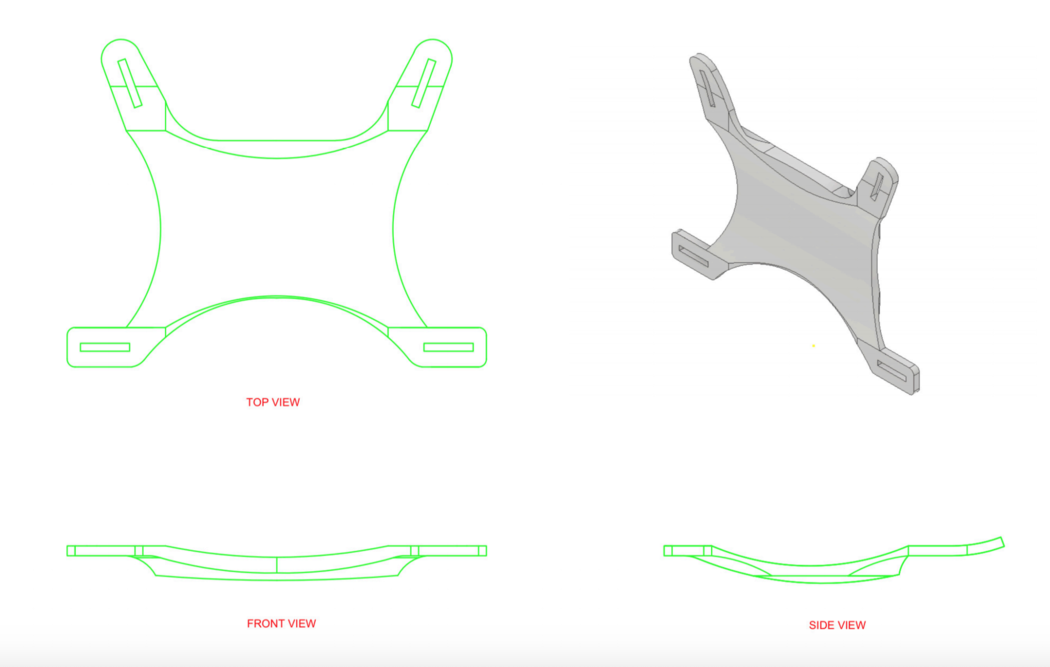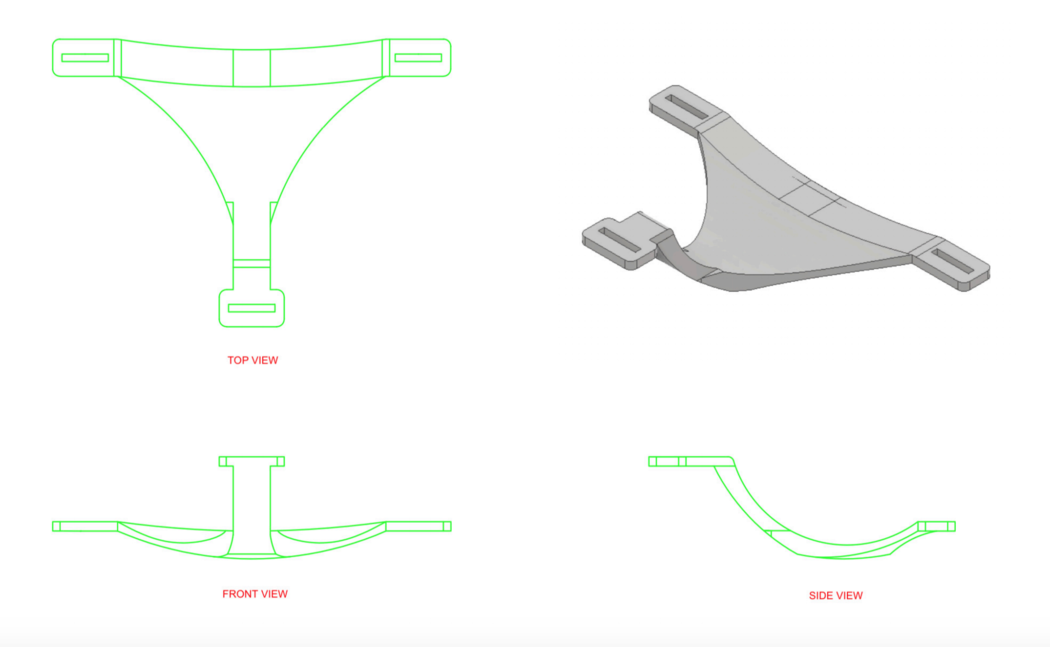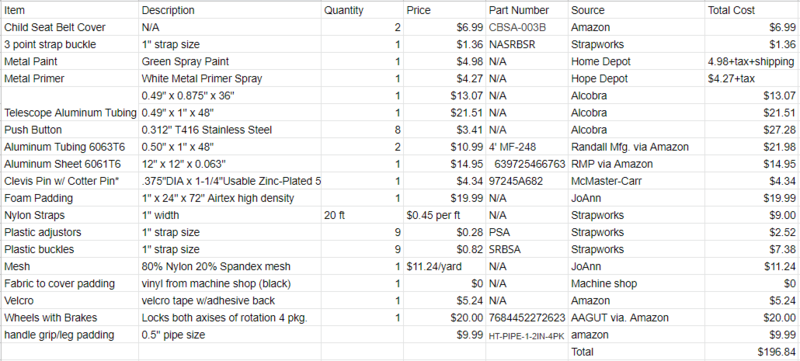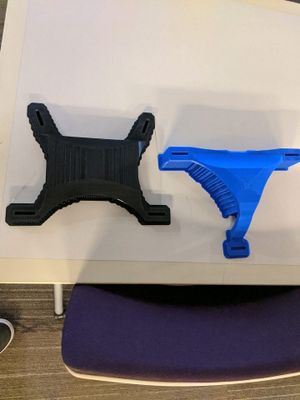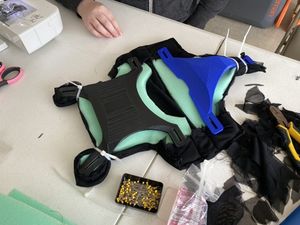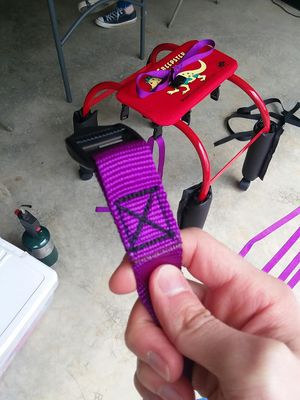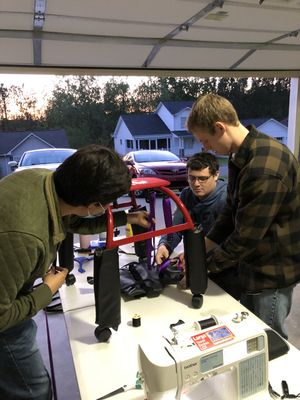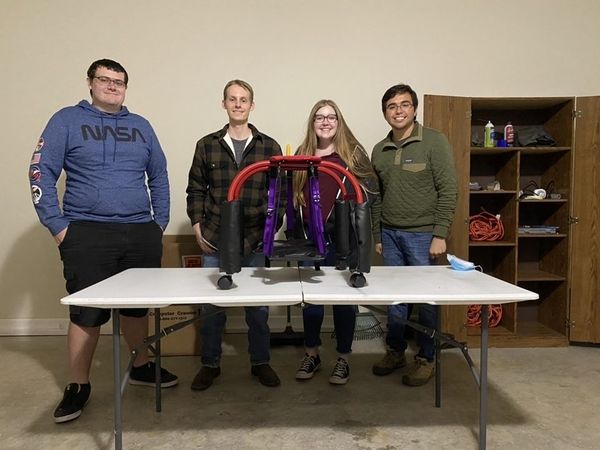Tummy Time
Abstract
Crawling is a vital step in development that can affect physical development, brain development, vision, co-ordination and balance, and self-confidence. Our therapist has communicated a need for a custom assisted crawling device for her two-year-old, special needs patient. This device will need to be adjustable in order to add more weight to the child's limbs as she gets stronger. It will also need to be able to move with the child whilst having brakes that can be used solely for tummy time**. Our goal is to build a device that will be safe for the child to use, satisfactory in building strength in her upper extremities, and efficient in helping her learn to crawl. Without compromising the integrity of the design, we are also considering designing the device to grow with the child, if at all possible. For this case, we may incorporate an option to use the device for assisted crawling as well as assisted walking.
** See Problem Statement/Overview of Need.
Team members
Problem Statement/Overview of Need
Our family's therapist has expressed need for a device to assist their child to learn to crawl and build muscle throughout her upper extremities including back, shoulders, chest, and arms. The child is a two-year old girl with a congenital disorder that causes her to have symptoms such as hypotonia (low muscle tone), poor growth, developmental delays, hepatopathy (liver disease with increased enzymes), abnormal bleeding, clotting, or bruising, misaligned (or crossed) eyes, seizures, stroke-like episodes, and/or heart problems throughout infancy and childhood.* The therapist has also expressed issues with abnormal reflexes, which we will need to account for by covering all exposed metal on the device. In our discussion, the patient's therapist also expressed that the child has developed the ability to lift her head independently, roll independently, and sit up with minimal assistance. They are currently working on sitting up independently. There are currently several crawling assist options on the market, but none of these options are suitable for our child's condition. The patient's mother has expressed several concerns with existing products due to the severity of her daughter's condition. In addition, the therapist has expressed a need to be able to take off the supports as the baby girl begins to get stronger.
- We plan to design and build a client-specific device to be used for 1) tummy time**, 2) assisted crawling, and 3)potentially, assisted walking. The assist should support the child, be portable, and fit the child securely.
It is our goal to create a device that will give the child the opportunity to learn to crawl and the freedom to explore the world independently. Crawling is an extremely important milestone during a child's development. In fact, some would say that crawling is the most vital stage during development. Generally, babies begin to crawl around six to ten months of age. The top benefits of crawling include physical development, brain development, vision development, development of co-ordination and balance, and development of self-confidence. Physical development includes the development of fine motor skills, as well as building muscle in the head, neck, arms, back, and legs. In addition to physical development, crawling is vital for cognitive development. By learning to crawl, a child's brain is encouraged to cross the mid-line, which is an invisible line that connects the left and right sides of the body. Psychologists say that crossing the mid-line allows the left and right sides of the brain to work together. Furthermore, crawling encourages healthy development of near and far vision, hand-eye co-ordination, balance, and confidence to interact with their environment. We believe that crawling will be an essential part to this child's development.
* The child may or may not have some or all of the symptoms mentioned.
** Tummy time is when a baby is placed on their stomach to play and crawl. It is vital for the baby to develop the neck, back, arms, and shoulder muscles needed to lift the head, sit up, crawl, and walk. A child who is developing according to typical development standards would learn to lift their head during tummy time at around four months old and be able to sit up independently between four and six months of age.
Design Specifications
1. First and foremost, we need to include a specialized support system. The assist needs to be able to support the child, and should be adjustable in rigidity. However, supports at the child's abdominal area should be avoided. All supports should be padded.
2. The assist is only required to help the child learn how to crawl; however, it is preferable to make the device in such a way so that it will also help the child learn to walk.
3. The harness needs to be made out of materials that will not deteriorate, and exposed metal on the frame should be kept to an absolute minimum.
4. The device needs to be portable; at least, it should be able to be moved from the therapy center to the client's home. Limit of 15 lbs in weight with a goal of <10lbs.
5. For safety reasons, the client requested the wheels to be large, stroller-like wheels, and should be covered. The wheels should also have brakes. We would like the wheels to be able to be used indoors and outdoors.
6. The harness needs to be easy to don and comfortable for the child to wear. Clips for switching out types of harnesses may be a good idea.
7. The harness should hold up to 20-25 lbs.
8. The client prefers a relaxed lime green color. She also mentioned including a hook to attach toys to the frame of the device.
Background research
There are already several options on the market to improve mobility for children. Options such as the Creepster Crawler and the CrawlAhead focus on crawling while other options such as the Bailey Mobility Crawler and the Crawligator focus more on transitioning tummy time to crawling. In addition, the first two options are supported from the top-down (suspension) while the latter are supported from the bottom-up. The therapist has a Creepster Crawler in-office and has expressed concern with this specific child being too small to be properly supported by the device. The therapist also said that while she likes the frame of the CrawlAhead, but the harness would be too rough on the patient's abdominal area. The mother is concerned that any pressure on her child's chest will cause bruising and discomfort. We are worried that the Mobility Crawler and the Crawligator will not provide enough support in the right places and that they will limit mobility for the patient.
Conceptual Design
Frame Design Concept 1
This frame is designed to fold so that the mother will be able to carry the device easily. This frame doubles as a walking assist device.
Frame Design Concept 2
This frame will be made of a light-weight material. The frame will have spring-loaded pins that can adjust the size of the frame. The family or therapist will also be able to take the frame completely apart for easy portability. If this option is chosen, we plan to provide a carrying case for quick storage. This frame also has an option to be reassembled to function as a walking assist device.
Frame Design Concept 3
This device is designed to be extended and locked in position at different heights. The seat portion will be able to rotate to accommodate crawling or walking. We may need to include a harness to support the upper body for the crawling option, which is our main priority.
Harness Design Concept 1
This design will be used to support the patient from her tummy. Some sort of a padded bodysuit with a Velcro back may be added to keep the child stable and take as much pressure off of her abdomen as possible. The straps may be made from a flat nylon or polyester webbing. The harness will also have buckles for easy release.
Evaluate concepts/select candidate
Based on the quantitative data, we are planning on using a frame that is a combination of the Folding Model and the Convertible.
Detailed schedule TBA.
Detailed Design
Due to COVID-19, we decided to purchase a Redbarn Creepster Crawler and customize the harness only, as well as ass removable padding to the four supporting bars. We ordered wheels with brakes, but they did not come in time to add.
Description of selected design
The initial plan was to build a folding frame using the equipment in the ME department machine shop. Due to COVID-19, we were no longer able to access the school's workshop. Since the frame required welding aluminum, we could not go forward with constructing a custom frame.
The overall dimensions of the frame we initially designed is 30.126in wide, by 16.126in deep, and, excluding the wheels, 11in tall extending to 16in.
Detailed description of selected design
The design is based around a rectangle (16” × 30”) made by mitering and welding Aluminum tubing (1” OD, 0.05” WT). Four brackets, made out of 0.063” Aluminum sheets, would be welded into the corners of the frame. A 3/8” holes are drilled through both sides of the bracket to allow for a through pin to connect to the legs; 11/32” holes are drilled through the outward facing side of the bracket to allow a spring-loaded pushpin to lock the legs either up or down. The legs are telescoping aluminum tubes (1” OD and 7/8” OD with 0.049” WT). The outer leg is 9" long with holes drilled every inch to adjust the height. The inner leg is 6.5" long and only has one hole to allow for the pushpin.
Analysis
Static Structural analysis was preformed in Auto-desk Fusion 360; the analysis calculates reaction forces, stress, strain, displacement, contact pressure, and safety factor for a given loading condition. This same analysis was performed in Auto-desk Inventor for both harness pieces. Weight was also a concern for portability, and of course reducing the amount of work required to crawl.
Engineering analysis 1
- Minimum Safety Factor: 1.676 at a bearing surface for the legs
- Maximum Stress: 23.8ksi
- Maximum Displacement: 0.039"
- Minimum Safety Factor: 1.035 at a bearing surface for the legs
- Maximum Stress: 38.5ksi
- Maximum Displacement: 0.100"
At 100 Lb load:
- Maximum Stress: 2.084ksi
- Maximum Displacement: 0.118"
Maximum safe load rating for the harness: 80 lbs
Engineering analysis 2
- Minimum Safety Factor: 1.655
- Maximum Stress: 18.14 ksi
One leg can support 165lbs before the surfaces that bear on the height adjusting button beings to yield.
Engineering analysis 3
Negating the wheels and weld beads, the mass of the frame is 56.26oz, approximately 3.5lbs, or 1.595kg. The solid volume is 27.873in^3 or 456.76cm^3. The average density is 2.018oz/in^3 or 3.492g/cm^3
CAD Drawings
Insert drawings of all parts and the assembly
Bill of Materials
Our bill of materials includes quantity, source, item, description, part number (when possible), and price.
We have two lists because, due to the effects of the COVID-19 virus and limited access to the shop, we were only able to begin construction on the harness. Thus, the second list is what we ordered in addition to a Redbarn Creepster Crawler, which we will use as a frame for our custom harness.
Assembly Instructions
All straps can be easily adjusted. No assembly required.
Fabrication Process
Testing and implementation
This device is going to be used in the home and possibly in therapy sessions to assist in teaching a child to crawl. We met with the family and therapist throughout the semester to ensure the fit and design would be optimum for the child.
Photos of Completed design
Instructions for safe use
Children should not use the device unless supervised by an adult. Maximum weight capacity for the frame is rated at 50lbs. Do not sit on the device.
Project Summary, Reflection
At the beginning of the semester, the child had just learned to lift her head and sit up on her own. Now, the therapist says the child is starting to show signs of wanting to crawl and be more independent. The mom says this will make for an exciting third birthday present for her daughter. We hope that this device lasts until either the child learns to crawl on her own or is able to transition to learning to walk with an assisted walking device.
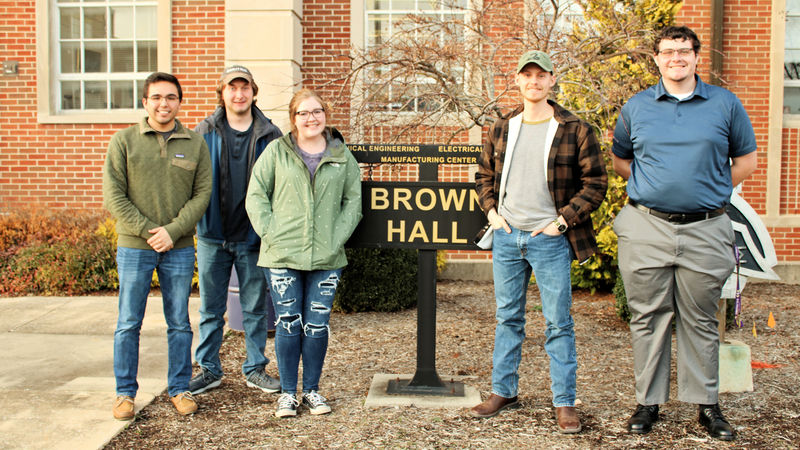
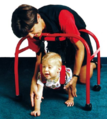
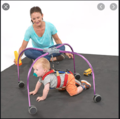
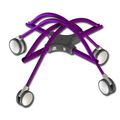
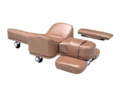


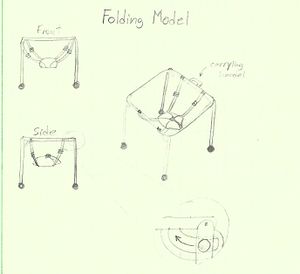
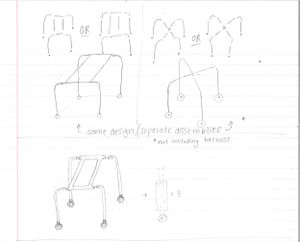
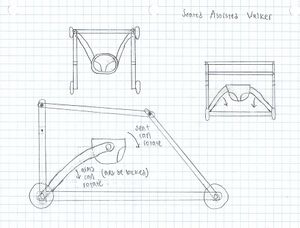
.jpg/300px-Harness_(1).jpg)

